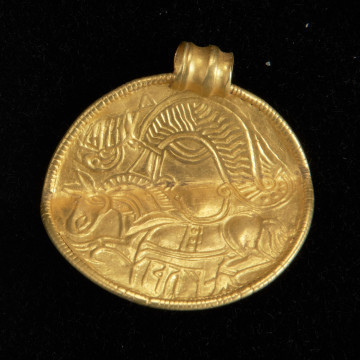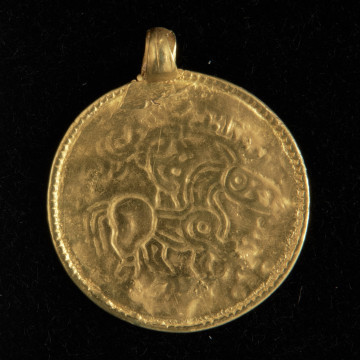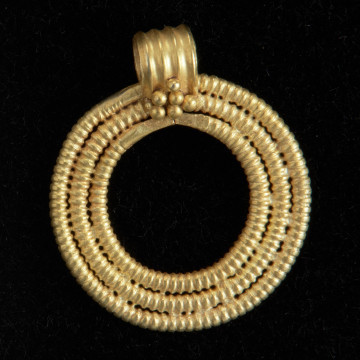
Bracteate
National Museum in Szczecin
Part of the collection: Antiquity
The gold ring, most likely used as a pendant, was made of gold wire. Ornaments of this type are known from northern and central Europe from the late Roman imperial period (3rd century). In Western Pomerania another such ring was found in Karlino, Białogard poviat. Such golden ornaments are particularly numerous in southern Scandinavia, e.g., in Halsskov Overdrev, Rynkeby and Aars in Denmark. This ring was part of a scattered deposit of gold objects discovered in Suchań in 2006 and 2007. The first three objects were found by accident in 2006 by a Suchań local resident who reported the discoveries to the conservator’s office. Following elements of the deposit were discovered during organized archaeological excavations. The assemblage, apart from the presented specimen, included two, almost identical bracelets with runic inscriptions and three ring-shaped pendants made of beaded wire, probably elements of a gold necklace, which is indicated by the presence of pendants and eyelets soldered on the bracteates. The presented ring was most probably also a part of the necklace. The whole assemblage of monuments is dated to the second half of the 5th century.
Bartłomiej Rogalski
Author / creator
Dimensions
cały obiekt:
Object type
pendicle, pendant
Technique
casting; forging
Material
gold
Creation / finding place
Owner
Muzeum Narodowe w Szczecinie
Identification number
Location / status

National Museum in Szczecin

National Museum in Szczecin

National Museum in Szczecin
DISCOVER this TOPIC
National Museum in Lublin
DISCOVER this PATH
Educational path